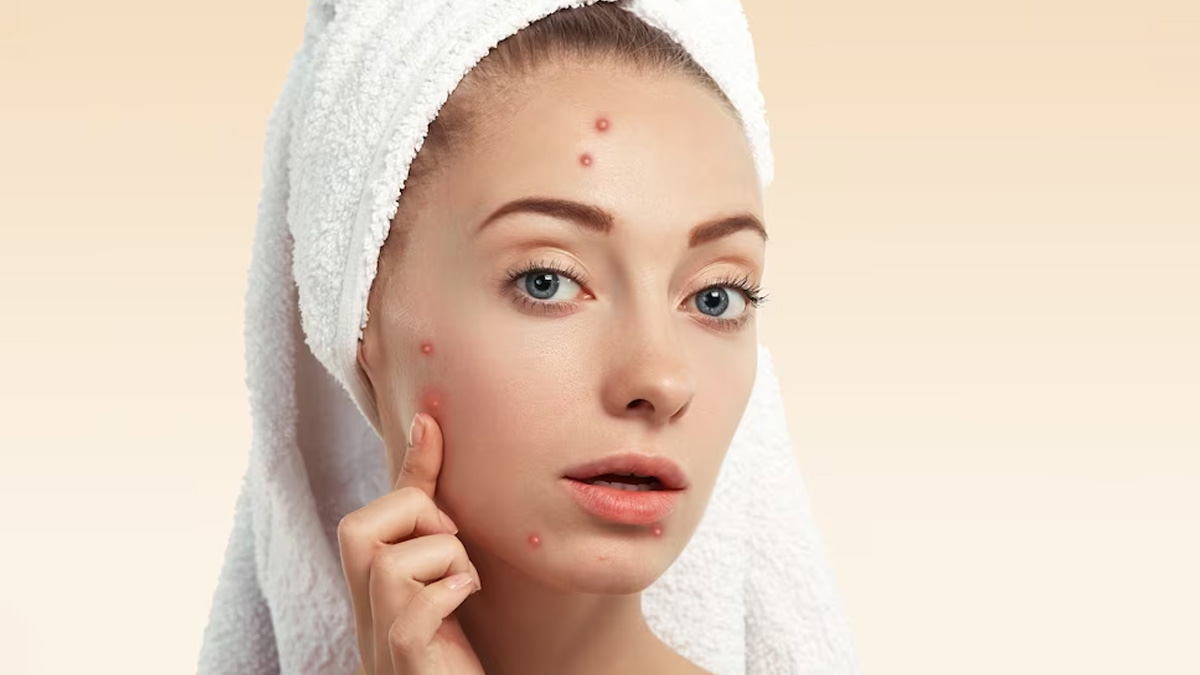
Acne, the bane of many adolescents and adults alike, can be particularly frustrating when it appears prominently on the forehead. Whether you're dealing with the occasional pimple or a cluster of persistent bumps, understanding the underlying causes and effective treatments can help you manage and prevent this common skin concern.
Table of Content:-
Talking along the lines, the editorial team of Onlymyhealth got in touch with Dr Aditi Wadhwa, Department of Dermatology - Sharda Hospital to decode the causes and treatment options for forehead acne. Here is what she shared with us.
Causes of Forehead Acne
1. Excess Oil Production
The sebaceous glands in our skin produce oil (sebum) to keep it moisturised. However, excess oil production, often triggered by hormonal changes or genetic predisposition, can lead to clogged pores and acne breakouts.
2. Poor Hygiene Habits
Infrequent face and hair washing can allow dirt, bacteria, and dead skin cells to accumulate on the skin's surface, leading to acne development.
3. Hair Products
Certain hair products like gels, serums, and styling creams can contain ingredients that may clog pores when they come into contact with the skin along the hairline.

Also Read: Impact of Obesity on Overall Health: Why Vitals Matter in Preconception Planning and Pregnancy
4. Hormonal Changes
Fluctuations in hormone levels, such as those experienced during puberty, menstruation, pregnancy, or stress, can stimulate the sebaceous glands, contributing to acne flare-ups.
5. Use of Steroid Creams
Topical steroid creams, when applied to the forehead area for conditions like eczema or psoriasis, can sometimes trigger acne as a side effect.
6. Irritants in Clothing and Makeup
Certain fabrics or makeup products may contain ingredients that can irritate the skin and exacerbate acne symptoms when in contact with the forehead.
Treatment Options for Forehead Acne
1. Topical Treatments
Over-the-counter gels and creams containing active ingredients such as clindamycin, benzoyl peroxide, niacinamide, and retinoids are commonly used to treat mild to moderate acne. These ingredients work by reducing inflammation, killing acne-causing bacteria, and promoting skin cell turnover.

Also Read: Combatting Measles: Expert Explains Symptoms and Effective Prevention Strategies
2. Salicylic Acid or Glycolic Acid Face Wash
Incorporating a gentle face wash containing salicylic acid or glycolic acid into your daily skincare routine can help exfoliate dead skin cells, unclog pores, and prevent future breakouts.
3. Oral Medications
In more severe cases of forehead acne, oral medications like antibiotics, hormonal contraceptives, or isotretinoin may be prescribed by a dermatologist to target deep-seated acne lesions and reduce inflammation.
4. Sun Protection
Using a gel-based, non-greasy sunscreen with a high SPF can protect the skin from harmful UV rays and prevent acne scarring and inflammation caused by sun exposure.
Preventive Measures for Forehead Acne
1. Maintain Good Hygiene
Regularly washing your face and hair with a gentle cleanser can help remove excess oil, dirt, and impurities from the skin's surface, reducing the risk of acne formation.
2. Choose Non-Comedogenic Products
Opt for skincare and haircare products labelled as "non-comedogenic," meaning they are formulated to not clog pores and aggravate acne-prone skin.
3. Wear Breathable Fabrics
Avoid wearing tight-fitting hats or headbands made from synthetic materials that can trap sweat and bacteria against the skin, potentially worsening acne symptoms.
4. Seek Professional Advice
If over-the-counter treatments fail to improve your forehead acne or if you experience severe or persistent breakouts, consult a dermatologist for personalised evaluation and treatment recommendations.
A Final Word
Managing forehead acne requires a combination of proper skin care practices, targeted treatments, and lifestyle modifications. By understanding the underlying causes and adopting a tailored approach to treatment, you can effectively control acne breakouts and achieve clearer, healthier skin. Remember to be patient and consistent with your skincare routine, and don't hesitate to seek professional help if needed.
Also watch this video
How we keep this article up to date:
We work with experts and keep a close eye on the latest in health and wellness. Whenever there is a new research or helpful information, we update our articles with accurate and useful advice.
Current Version